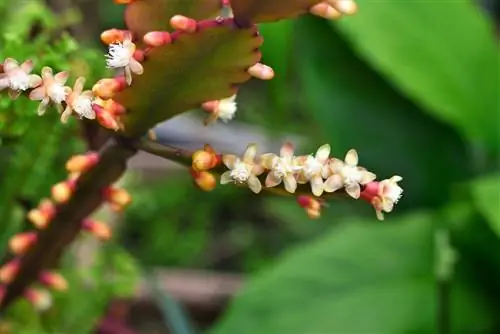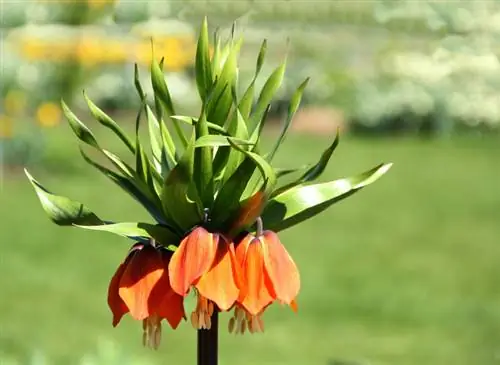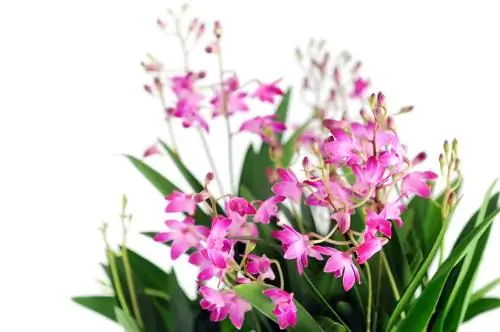- Author admin [email protected].
- Public 2023-12-16 16:46.
- Last modified 2025-01-23 11:21.
Rhipsalis refers to a type of cactus that is widely considered to be a leaf cactus. These cacti are also called coral cactus, rush cactus or rod cactus because of their long, sometimes very thin shoots. All species in this family are easy to care for and ideal for gardeners who want to start growing cacti.

Which Rhipsalis species are known and easy to cultivate?
Rhipsalis species are easy-care cacti native to Brazil. Well-known species are Rhipsalis baccifera, Rhipsalis campos-portoana, Rhipsalis cassutha, Rhipsalis cereuscula, Rhipsalis crispata and Rhipsalis houlletiana. These epiphytic plants are ideal for beginners and can be easily propagated from cuttings.
Almost all Rhipsalis species come from Brazil
Rhipsalis belongs to the epiphytes. So this type of cactus grows on other plants. It is native to the rainforests of Brazil. It is not frost hardy and doesn't like direct sunlight, especially at midday.
In the wild, the often very thin shoots can reach a length of up to two and a half meters.
In the house, the non-poisonous cactus species is usually grown as an ampelous plant because the shoots hang down long. It is extremely easy to care for and tolerates small care mistakes very well.
Known Rhipsalis species
The most well-known types of rhipsalis include:
- Rhipsalis baccifera
- Rhipsalis campos-portoana
- Rhipsalis cassutha
- Rhipsalis cereuscula
- Rhipsalis crispata
- Rhipsalis houlletiana
Rhipsalis is easy to care for
Rhipsalis is probably one of the easiest cactus species to care for. The worst mistake you can make is a root ball that is too wet. You must therefore be a little careful when watering so that waterlogging does not develop under any circumstances. However, complete dryness should also be avoided.
Rhipsalis does not require proper winter rest. It can be kept in the flower window all year round. However, some experts recommend ensuring different day and night temperatures to stimulate flowering.
Easily propagate Rhipsalis via cuttings
Rhipsalis is very easy to propagate. All you have to do is cut cuttings in the spring. The cuttings must be 10 to 15 centimeters long.
After cutting, allow the interfaces to dry for several days. Only then are the cuttings placed about four centimeters deep into prepared cultivation pots. The substrate must be kept moderately moist.
As soon as new shoots develop, the rhipsalis has formed enough roots. It can then be cared for as normal as an adult plant.
Tip
Most types of rhipsalis develop very pretty flowers, some of which are very fragrant. The flowering period lasts from November to May.






